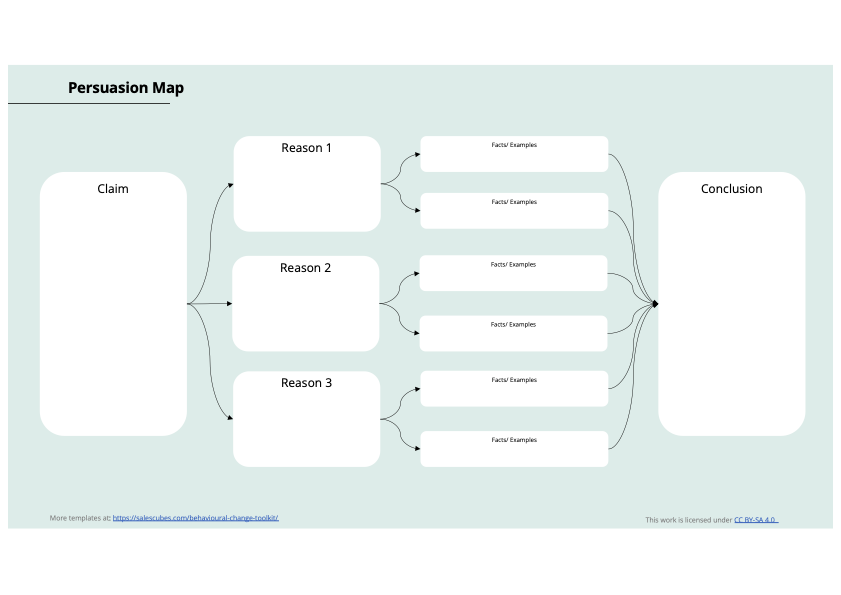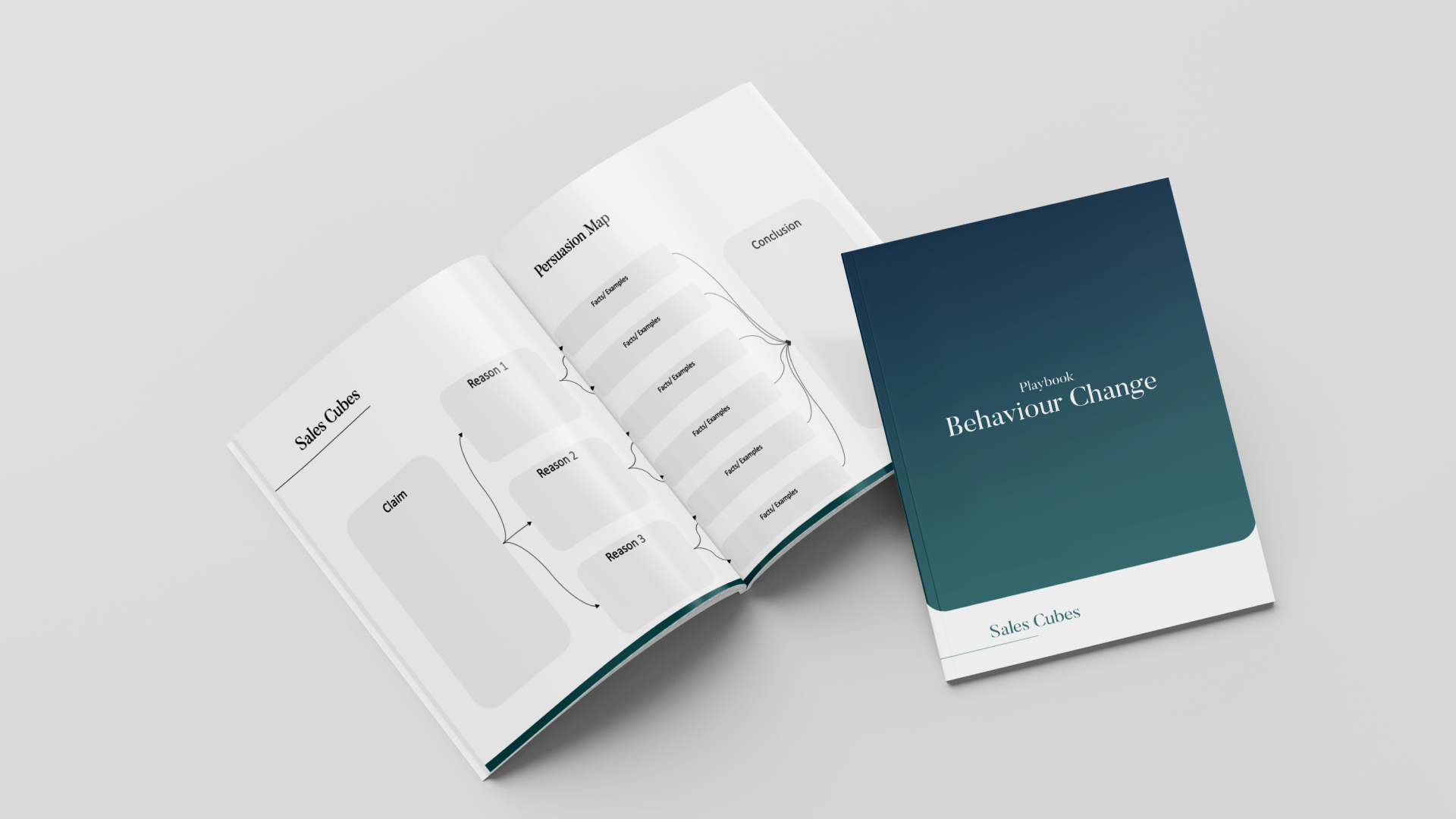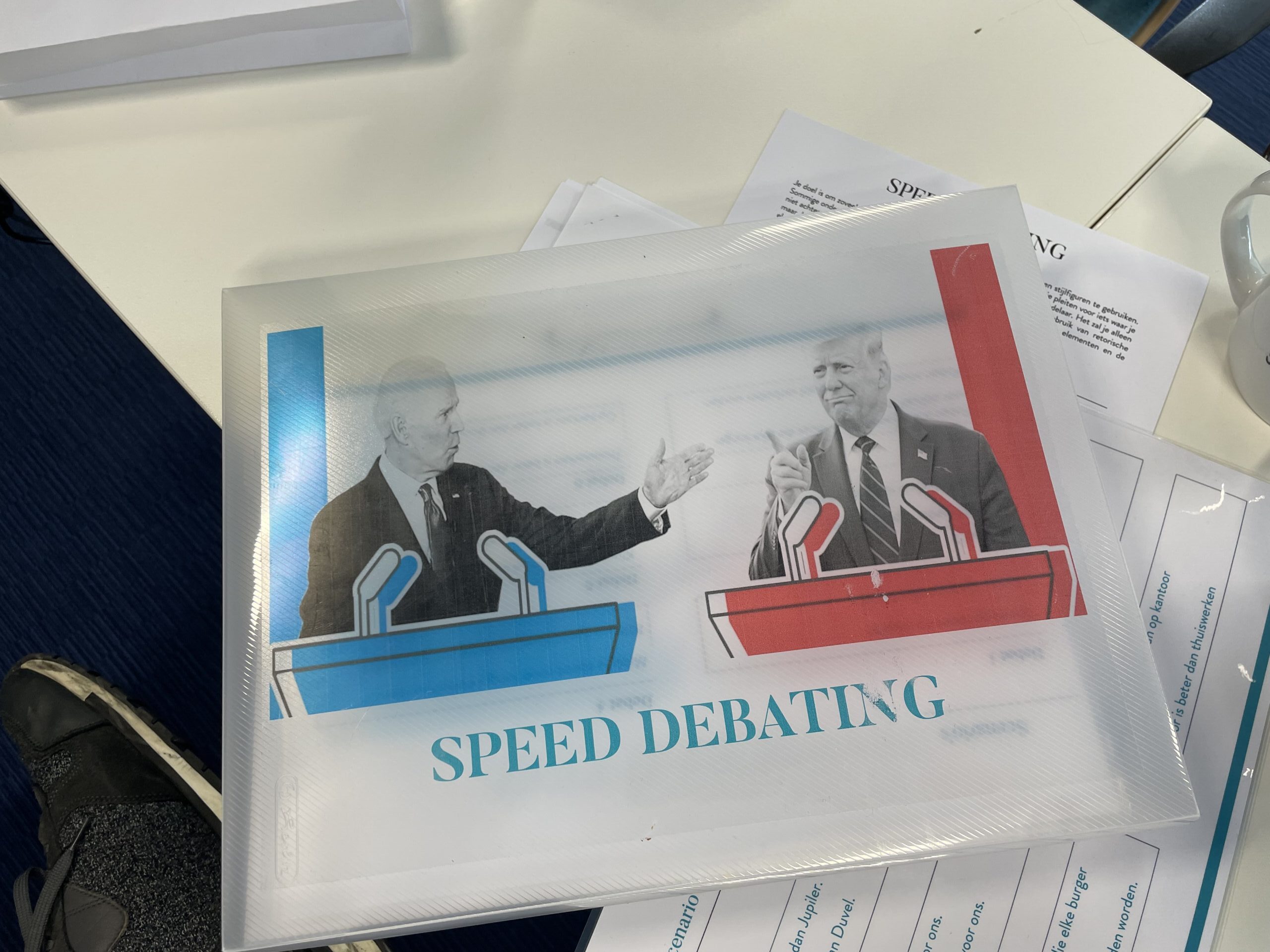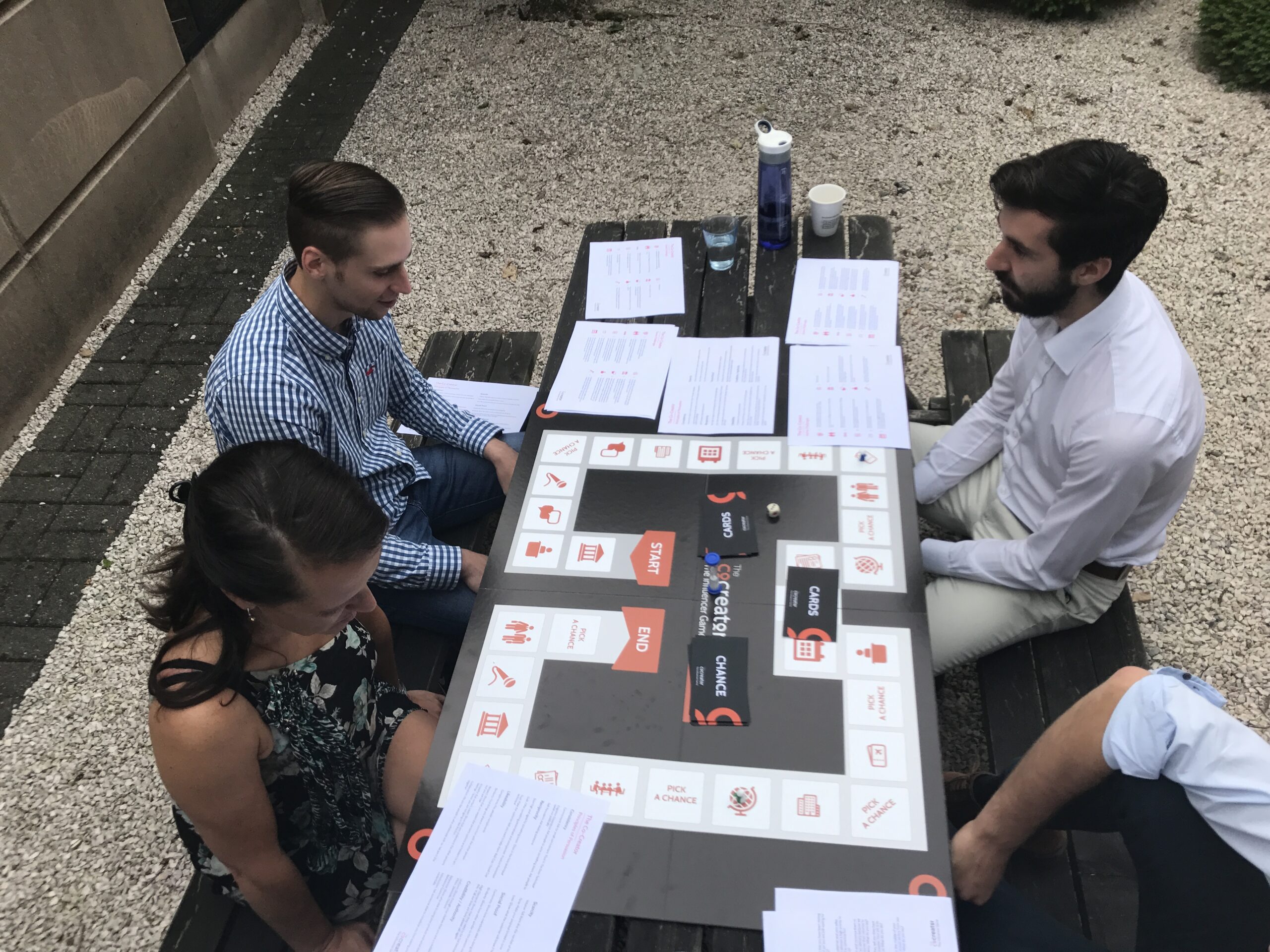What is it?
The Persuasion Map Toolkit is a structured approach to planning and organizing persuasive arguments. It’s a visual and interactive tool that helps individuals map out their persuasive communication, whether it’s for writing, speeches, or presentations. The core idea is to visually break down the elements of an argument into a clear, logical flow. It typically includes sections for the main argument (thesis), supporting points, evidence for each point, and a conclusion.
How useful is it?
The Persuasion Map Toolkit is essential for clearly structuring arguments. It simplifies complex ideas into clear, persuasive elements, enhancing both the impact of communication and critical thinking skills.
Application
We use in education for essay writing and in business for crafting compelling proposals.
Process
Step 1: Identify Your Main Argument
Start with a clear, concise statement of your position or what you are trying to persuade your audience to believe or do. This is your main hypothesis or claim.
Example: “Investing in renewable energy will benefit your company.“
Step 2: List Supporting Points `
Identify 2-4 key points that support your main argument. These should be logical, distinct, and directly related to your thesis.
Example: “Provides long-term cost savings“, “Enhances your company image.”
Step 3: Gather Evidence
For each supporting point, provide evidence. This could be data, quotes, examples, or logical reasoning.
Example: “Financial projections comparing renewable vs. traditional energy costs.” and “Case studies of businesses gaining positive publicity from green initiatives.”
Step 4: Consider Counterarguments
Acknowledge potential counterarguments and explain why your argument still stands. This shows critical thinking and strengthens your position.
Counterargument: “High Initial Investment Costs”
Rebuttal: “While the initial investment in renewable energy is notable, the long-term savings, coupled with government incentives, significantly offset these costs and offer enduring financial benefits.”
Step 5: Conclude Effectively
Summarize your argument and supporting points. Reinforce the importance of your thesis and leave the audience with a strong final impression.
Example: “Renewable energy is a financially and ethically sound investment for our future.“
Tool



